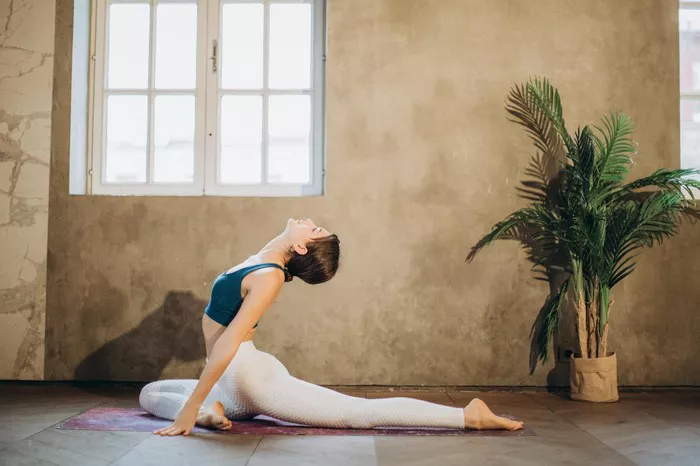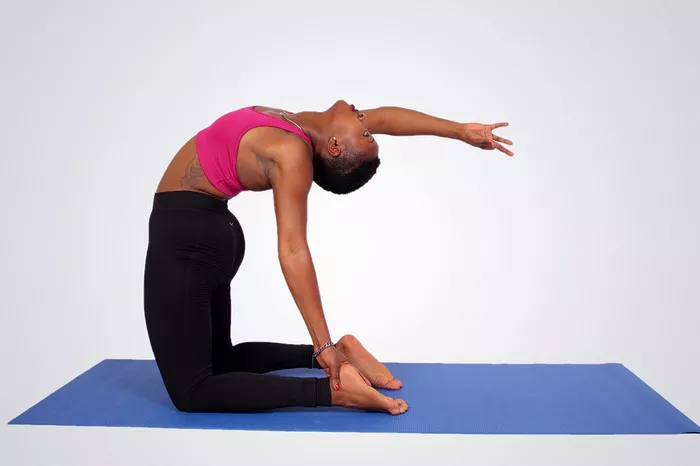Spondylolisthesis, a condition characterized by the forward displacement of a vertebra over the one beneath it, often causes significant discomfort and mobility issues. The condition can result from various factors, including congenital abnormalities, traumatic injury, degenerative changes, or stress fractures. Given the complexity and potential severity of spondylolisthesis, managing symptoms and improving quality of life is paramount for those affected. Among the myriad of therapeutic options available, yoga has emerged as a popular and holistic approach to managing spondylolisthesis. This article delves into whether yoga is beneficial for individuals with spondylolisthesis, examining both the advantages and potential risks.
Understanding Spondylolisthesis
To fully appreciate the role of yoga in managing spondylolisthesis, it is essential first to understand the condition itself. Spondylolisthesis is classified into five types:
- Congenital Spondylolisthesis: Resulting from abnormal bone formation at birth.
- Isthmic Spondylolisthesis: Often caused by stress fractures.
- Degenerative Spondylolisthesis: Associated with aging and the wear and tear of spinal structures.
- Traumatic Spondylolisthesis: Resulting from an injury that causes vertebral displacement.
- Pathologic Spondylolisthesis: Caused by disease processes such as osteoporosis or tumors.
The symptoms of spondylolisthesis vary depending on the severity of the displacement and the affected vertebrae. Common symptoms include lower back pain, stiffness, muscle tightness, pain in the thighs and buttocks, and in severe cases, nerve damage leading to leg weakness or numbness.
The Potential Benefits of Yoga for Spondylolisthesis
Yoga, an ancient practice that combines physical postures, breathing exercises, and meditation, is renowned for its holistic health benefits. Here’s how yoga may be beneficial for individuals with spondylolisthesis:
Improved Flexibility and Strength: Yoga involves various stretching and strengthening exercises that can enhance the flexibility and strength of the spine and surrounding muscles. This improvement can help alleviate some of the pain and discomfort associated with spondylolisthesis.
Enhanced Postural Alignment: Many yoga poses focus on aligning the spine correctly. Proper alignment can reduce the stress on the affected vertebrae and improve overall spinal health.
Pain Management: Yoga’s emphasis on mindfulness and relaxation can help manage chronic pain. Techniques such as deep breathing and meditation can reduce the perception of pain and improve an individual’s ability to cope with discomfort.
Reduced Stress and Anxiety: Chronic pain conditions like spondylolisthesis often lead to increased stress and anxiety. Yoga’s meditative aspects can promote mental well-being, helping to reduce the psychological burden of the condition.
Increased Blood Flow and Healing: The gentle movements and stretches in yoga can enhance blood circulation, promoting the delivery of oxygen and nutrients to the affected areas and facilitating healing.
Recommended Yoga Poses for Spondylolisthesis
While yoga can be beneficial, it is crucial for individuals with spondylolisthesis to perform the correct poses and avoid those that may exacerbate their condition. Here are some recommended poses that may help:
Cat-Cow Stretch (Marjaryasana-Bitilasana): This gentle, flowing movement between arching and rounding the back can help improve spinal flexibility and relieve tension in the lower back.
Child’s Pose (Balasana): A restorative pose that stretches the lower back and promotes relaxation.
Bridge Pose (Setu Bandhasana): Strengthens the muscles around the spine and helps in maintaining proper alignment.
Cobra Pose (Bhujangasana): Strengthens the back muscles and promotes spinal extension, which can help counteract the forward slippage of the vertebrae.
Supine Hamstring Stretch: Stretching the hamstrings can reduce lower back strain, which is beneficial for those with spondylolisthesis.
See Also: Is Yoga Good for Hypermobility
Precautions and Contraindications
While yoga offers numerous benefits, it is essential for individuals with spondylolisthesis to approach the practice with caution. Here are some key precautions:
Consultation with Healthcare Providers: Before starting yoga, individuals should consult their healthcare providers to ensure it is safe for their specific condition.
Avoiding High-Impact and Deep Flexion/Extension Poses: Poses that involve deep forward bends, backbends, or twisting motions should be avoided as they can exacerbate the condition.
Listening to the Body: Practitioners should always listen to their bodies and avoid pushing into pain. Modifications and props can be used to ensure comfort and safety.
Working with a Qualified Yoga Instructor: A yoga instructor experienced in working with individuals with back problems can provide personalized guidance and adjustments.
Case Studies and Research
The effectiveness of yoga for managing spondylolisthesis has been the subject of various studies and anecdotal reports. For instance, a study published in the Journal of Bodywork and Movement Therapies highlighted the potential of yoga to improve functional outcomes in individuals with lower back pain, including those with spondylolisthesis. Participants who engaged in a structured yoga program reported significant reductions in pain and improvements in quality of life.
In another study, individuals with degenerative spondylolisthesis who practiced yoga regularly experienced enhanced spinal stability and reduced symptoms. The study emphasized the importance of personalized yoga programs tailored to the individual’s specific needs and limitations.
Integrating Yoga into a Comprehensive Treatment Plan
While yoga can be a valuable component of managing spondylolisthesis, it is most effective when integrated into a comprehensive treatment plan. This plan may include:
Physical Therapy: Working with a physical therapist can help address specific muscle imbalances and develop a targeted exercise regimen.
Medical Management: Medications may be prescribed to manage pain and inflammation.
Lifestyle Modifications: Adopting ergonomic practices, maintaining a healthy weight, and engaging in regular low-impact exercise can support overall spinal health.
Alternative Therapies: Techniques such as acupuncture, chiropractic care, and massage therapy can complement yoga and contribute to symptom relief.
Surgical Interventions: In severe cases, surgical options may be considered to stabilize the spine and alleviate nerve compression.
Personal Stories and Testimonials
Personal stories and testimonials from individuals with spondylolisthesis who have incorporated yoga into their treatment plans can provide valuable insights and inspiration. For example, Jane Doe, a 45-year-old woman diagnosed with degenerative spondylolisthesis, found significant relief through a customized yoga program. Jane reports, “Yoga has been a game-changer for me. It not only helped with my pain but also improved my overall well-being. I feel more in control of my body and my condition.”
Conclusion
Yoga can be a beneficial practice for individuals with spondylolisthesis, offering physical, mental, and emotional benefits. However, it is crucial to approach yoga with caution, seek professional guidance, and tailor the practice to individual needs and limitations. By integrating yoga into a comprehensive treatment plan, individuals with spondylolisthesis can enhance their quality of life, manage symptoms effectively, and promote overall spinal health. As always, consulting with healthcare providers and working with experienced yoga instructors are key to ensuring a safe and effective practice.

























